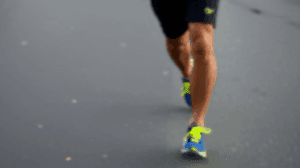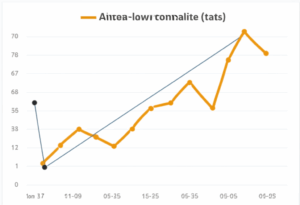Dr. Andrew Huberman, a renowned neuroscientist and professor at Stanford University, consistently emphasizes the importance of simple, science-backed habits for optimizing mental and physical well-being. In a recent appearance on Theo Von’s podcast, Huberman shared three zero-cost habits that form the foundation of his daily routine. These habits, requiring nothing but consistency, can significantly impact mood, energy levels, and sleep quality. Let’s dive into these transformative practices.
1. Early Morning Sunlight Exposure: Nature’s Daily Reset
Why Sunlight?
Huberman emphasizes that “one of the most important things for mental health is bright mornings and days.” Exposure to early morning sunlight, ideally within the first 30 to 60 minutes of waking, plays a crucial role in anchoring your circadian rhythm. This, in turn, sets the stage for optimal dopamine and cortisol levels, leading to improved energy and focus throughout the day and better sleep at night. Morning sunlight also helps suppress melatonin that might be present upon waking, interacts with the adenosine system to help you feel more alert, and prepares your body to fall asleep about 16 hours later.
When morning sunlight enters the eyes, it activates neurons that signal it’s daytime and time to be alert. This sets off numerous biological cascades in cells and organs throughout the body, including the brain, liver, gut, and heart. Exposure to morning sunlight induces a healthy rise in cortisol levels from the amygdala, promoting wakefulness and supporting a robust immune system. This cortisol spike should occur early in the day, and its timing can be regulated by when you are exposed to bright light, with the most effective time being early in the morning.
Huberman considers viewing morning sunlight to be in the top five of all actions that support mental health, physical health and performance—alongside sleep, movement, nutrients, and relationships. The reason morning sunlight is so impactful is because it both increases early-day cortisol release while also regulating our circadian clock.
How to Implement:
- Time: Aim for 5-15 minutes of sunlight exposure.
- Location: Step outside. Avoid getting sunlight through a windshield or window, as the filtering effect reduces its effectiveness.
- Attire: Ditch the sunglasses! Direct sunlight exposure to your eyes is key. Eyeglasses and contact lenses are fine.
- Weather: Even on overcast days, there’s enough sunlight to trigger the benefits. Extend your outdoor time to at least 15-30 minutes on cloudy or rainy days.
- Timing is Key: Viewing sunlight in the middle of the day does not impact your circadian clock. Fail to view morning sunlight, and your clock drifts.
- Consistency is Key: It’s recommended to practice getting sunlight exposure at least 80% of the days and to extend the exposure if missed a day
The Science Behind It:
- Circadian Rhythm Regulation: Morning sunlight synchronizes your internal clock with the 24-hour light-dark cycle, influencing sleep patterns, mood, and metabolism.
- Hormone Balance: It regulates the production of melatonin, the sleep hormone, promoting alertness during the day and better sleep at night. It also boosts cortisol levels in the morning—an ideal time for a natural surge—and helps set you up for a restful night’s sleep later.
- Mood Enhancement: Sunlight triggers the release of serotonin, a neurotransmitter associated with feelings of happiness and contentment, alleviating stress and fostering a resilient mindset.
- Cognitive Function: Morning sunlight stimulates dopamine production, enhancing mental clarity, motivation, focus, and productivity.
What If You Wake Up Before Sunrise?
If you wake up before the sun is out, turn on artificial lights in your internal home environment or apartment. However, bright artificial lights are not sufficiently bright to trigger the cortisol mechanism and the other wake up mechanisms that you need early in the day, unless you have a very special light. But those lights in your home or apartment or even on your phone are bright enough to disrupt your sleep if you look at them too late at night or in the middle of the night.
Consider a dawn simulator that gradually increases light intensity to mimic a natural sunrise. If you don’t have access to sunlight for whatever reason, there are blue and orange lights designed to mimic the sunrise and sunset.
2. Deliberate Cold Exposure: Build Resilience and Boost Dopamine
Why Cold Exposure?
Deliberate cold exposure, such as cold showers or ice baths, is a potent tool for improving both mental and physical resilience. Huberman highlights its ability to increase levels of catecholamines, including dopamine, adrenaline, and noradrenaline, which can improve attention, mood, and focus. Cold exposure can raise dopamine levels by 250%. Moreover, deliberate cold exposure is an opportunity to stress our body on purpose, and learn to maintain mental clarity & calm while our body is in a state of stress. By facing discomfort, practitioners can exert ‘top-down control’ over deeper brain centers, building resilience and grit.
How to Implement:
- Method: Cold water immersion up to the neck is the most effective option, but a cold shower is a practical alternative.
- Duration: Aim for a total of 11-15 minutes per week, split between 2-4 sessions lasting 1-5 minutes each.
- Temperature: The water temperature should be uncomfortably cold, yet safe to stay in for a few minutes. Aim for a temperature that makes you feel uncomfortable (want to get out), but still safe.
- Timing: Doing deliberate cold exposure early in the day will further increase your core body temperature (associated with wakefulness, ability to be alert throughout the day). Avoid doing it very late in the evening as it might disrupt your sleep.
- Technique: To increase the stimulus and get more benefit, try moving continuously and keep your mind still. Anchoring your mind in cognitive activities as you get into the cold can be very helpful for maintaining clarity of mind.
- Afterward: For the greatest boost in metabolism via cold exposure force yourself to reheat on your own after cold exposure. Don’t towel off, try to dry naturally and shiver (it enhances the metabolic effect).
The Science Behind It:
- Hormonal Response: Cold exposure causes a significant release of epinephrine (aka adrenaline) and norepinephrine (aka noradrenaline) in the brain and body. These neurochemicals make us feel alert and can increase your level of energy and focus, which can be applied to other mental and/or physical activities.
- Dopamine Increase: One study showed significant and prolonged increases in dopamine when people were in cool (60°F) water for about an hour up to their neck, with their head above water. Other studies describe significant increases in epinephrine from just 20 seconds in very cold water (~40°F).
- Mental Resilience: Deliberate cold exposure improves mental performance, resilience, grittiness, the ability to move through challenges. Stress is the consequence of increases in noradrenaline and adrenaline in our brain and body (almost identical to what happens from deliberate cold exposure).
- Metabolic Boost: Short bouts of cold exposure can cause a lasting increase in dopamine and sustained elevation of mood.
Important Considerations:
- Safety First: The environment should be uncomfortably cold but such that you can stay in safely.
- Gradual Adaptation: As you do deliberate cold exposure more often, you will be more comfortable in the cold at all times and can start to use colder temperatures with more confidence, just like exercise.
- Avoid After Training: If your main goal is hypertrophy and strength, it’s probably best to avoid cold immersion (up to the neck) for 4 hours after training.
3. Non-Sleep Deep Rest (NSDR): Recharge and Enhance Learning
Why NSDR?
NSDR is a zero-cost protocol aimed at achieving a state of deep relaxation and rejuvenation without falling asleep completely. This guided practice, involving breathing and body-scan techniques, can raise dopamine levels by up to 60 percent. Huberman emphasizes that NSDR replenishes your vigor and can be a powerful tool for managing stress, improving focus, and enhancing learning. The connection between non-sleep deep rest (NSDR), meditation and breathwork lies in leveraging certain physiological responses to achieve a range of benefits for both the mind and body.
How to Implement:
- Technique: Sit or lie down in a comfortable position with your eyes closed.
- Guidance: Listen to a guided meditation or NSDR protocol. Huberman’s specific NSDR protocol involves sitting or lying down with your eyes closed and a narration of visualization and breathing exercises.
- Environment: Practice NSDR in a quiet area that is free from potential distractions.
- Enhancements: Using calming scents, a weighted blanket, or even a white noise machine may help you center your mind and attention on the meditation.
- Duration: Even a short 10-30 minute session can be beneficial.
The Science Behind It:
- Nervous System Regulation: Relaxation techniques that fall under the umbrella term NSDR help a person enter deep relaxation. Through breathing, visualization, and attention exercises, these practices have been found to decrease activity in the sympathetic nervous system (responsible for the stress response) while activating the parasympathetic nervous system (responsible for the relaxation response).
- Dopamine Boost: This guided breathing and body-scan practice can raise dopamine by up to 60 percent.
- Cognitive Benefits: NSDR protocols allow you to reach a state of deep relaxation while remaining awake and can be used to compensate for lost sleep occasionally, restore dopamine levels, reduce cortisol levels and improve the brain’s ability to learn and remember. It enhances the learning process by reducing day-time fatigue and improving focus. It can also greatly enhance your sleep, boost your mood, and promote neuroplasticity – the ability of your brain to change and grow.
- Stress Reduction: NSDR combines meditation and light napping to calm the nervous system, boost focus, and reduce stress.
Types of NSDR Practices:
- Yoga Nidra: A traditional practice that pairs a guided meditation with yogic language, aiming for total relaxation and a deeply relaxed state of consciousness with brain activity similar to sleep, though you remain awake.
- Meditation: Meditation practices will fall somewhere along two spectrums: inward vs. outward attention and sharp vs. diffused focus. Interoceptive (inward-facing) practices direct attention to bodily sensations like your heartbeat or breathing. Exteroceptive (outward-facing) practices turn your attention to external stimuli like certain sounds or visual cues. Walking meditation is an example of a practice where you are noticing external stimuli while also noticing the bodily sensations of movement and breathing.
Integrating These Habits into Your Daily Life
These three zero-cost habits, championed by Andrew Huberman, offer a powerful foundation for improving mental and physical well-being. By consistently incorporating early morning sunlight exposure, deliberate cold exposure, and NSDR into your daily routine, you can unlock your potential, enhance your resilience, and optimize your overall health.







